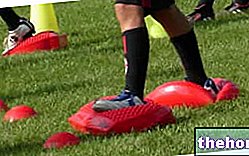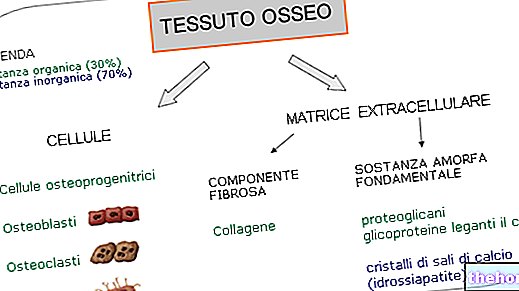After analyzing the main characteristics of the muscles of the human body and the various types of muscle tissue, let's focus on skeletal muscle.
Among the three (in addition to it we remember the smooth and cardiac ones), skeletal muscle tissue is the most abundant, so much so that in an adult man it constitutes about 40% of body weight. As the name suggests, skeletal muscle is connected to bones; its movement of contraction and relaxation causes the bone segments in which it is inserted to modify the reciprocal position.
Constituents of the skeletal muscleThe bones constitute the passive component of the movement, while the skeletal muscles represent the active component, as they possess the ability to contract under nerve stimulus and to generate motive force.
- Water (about 75%)
- Proteins (about 20%). The most important are myosin and actin.
- Glycides (0.5-1.5%). The most important is glycogen.
- Neutral fats, cholesterol and phospholipids.
- Mineral salts (about 5%).
- Enzymes.
- Nitrogenous extractive substances (eg: creatine and urea) and non-nitrogenous extractive substances (eg: lactic acid).
- Pigments (ex: myoglobin)
The muscle transmits its strength to the bones by means of tendons, very resistant and slightly elastic fibrous structures. Tendons appear as cords or as fibrous laminae, depending on whether they are associated with long muscles or large muscles; in any case they are closely linked to the muscular regions adjacent to them. The connective tissue of the muscle in fact merges with the tendon collagen bundles, forming the so-called myotendinous junction. It is a particularly solid and resistant union, so much so that tendon injuries rarely occur at this level, while it is easier for the tendon to detach from the bone fragment where it is inserted.
THE MUSCLE PULLS THE BONES, BUT NOT PUSH THEM!
For example, the brachial biceps muscle, which allows us to flex the forearm, is unable to extend it.
Since the muscle cannot perform the opposite movement to that which it is assigned to, the muscles work in pairs or groups of antagonists. In other words, each muscle corresponds to another with opposite function. Returning to the previous example, the extension of the forearm is guaranteed by the contraction of the triceps.
In order for movement to occur, it is necessary that during the contraction and shortening of the one, the other relaxes and stretches out. For this reason, the biceps and triceps are a classic example of antagonistic muscles.
On the basis of their function, the muscles that collaborate in the execution of a movement are called AGONISTS, ANTAGONISTS those that oppose the reciprocal movement (for example, flexors and extensors are antagonists).
Similarly, there are muscles that have synergistic action, as in the case of the brachialis and biceps or the anconeus and triceps; in this case we speak of agonist muscles.
A further distinction can be made between agonists and synergists; the first term, in fact, belongs to those muscles that together allow a certain movement to be performed; instead, those muscles that assist (facilitate) the movement generated by the agonists are awarded the adjective synergistic.
Skeletal muscles are never completely relaxed. Even during sleep there is a permanent weak contraction, called MUSCLE TONE.
A little "nomenclature":
We speak of flexion when the centers of the bones attached to the muscle come closer; vice versa, we speak of extension.
In relation to the movement it performs, we speak of the origin of a muscle to indicate the tendon extremity closest to the trunk or to the most stable bone; the insertion, on the other hand, represents the most distal or most mobile point of implantation (it pulls the bone head behind it). The two tendons of the brachialis, for example, are inserted, respectively, in the lower half of the anterior face of the humerus (arm) and on the tuberosity of the ulna ("upper part of the" forearm "). Since the main action of this muscle is to flex the forearm, the point of insertion on the tuberosity of the ulna is called insertion.
The central portion of the muscle, generally spindle-shaped, looks like a fleshy mass and is called the muscle belly. The contractile force depends on the volume and the fleshy part, but not only on it (in general, the greater its development, the greater the force produced during the contraction of the skeletal muscle).

Other articles on "Skeletal Muscle"
- muscles of the human body
- Muscles classification
- Muscles with parallel bundles and pinnate muscles
- Muscle anatomy and muscle fibers
- myofibrils and sarcomeres
- actin myosin
- muscle contraction
- muscle innervation
- neuromuscular plaque
















.jpg)











